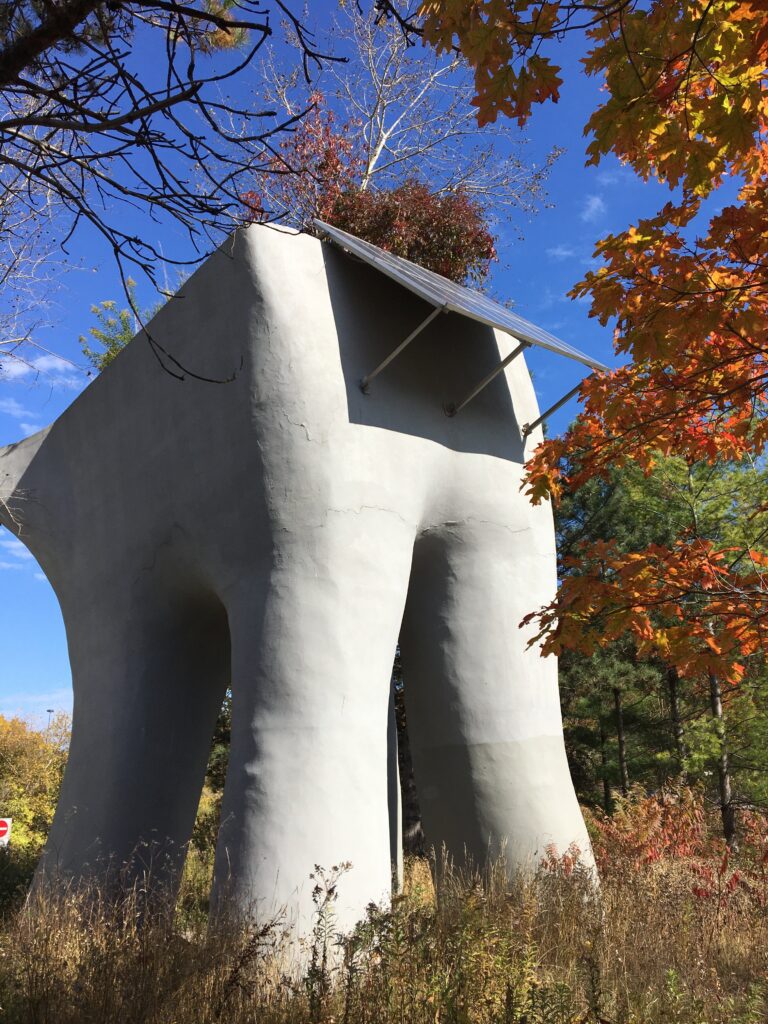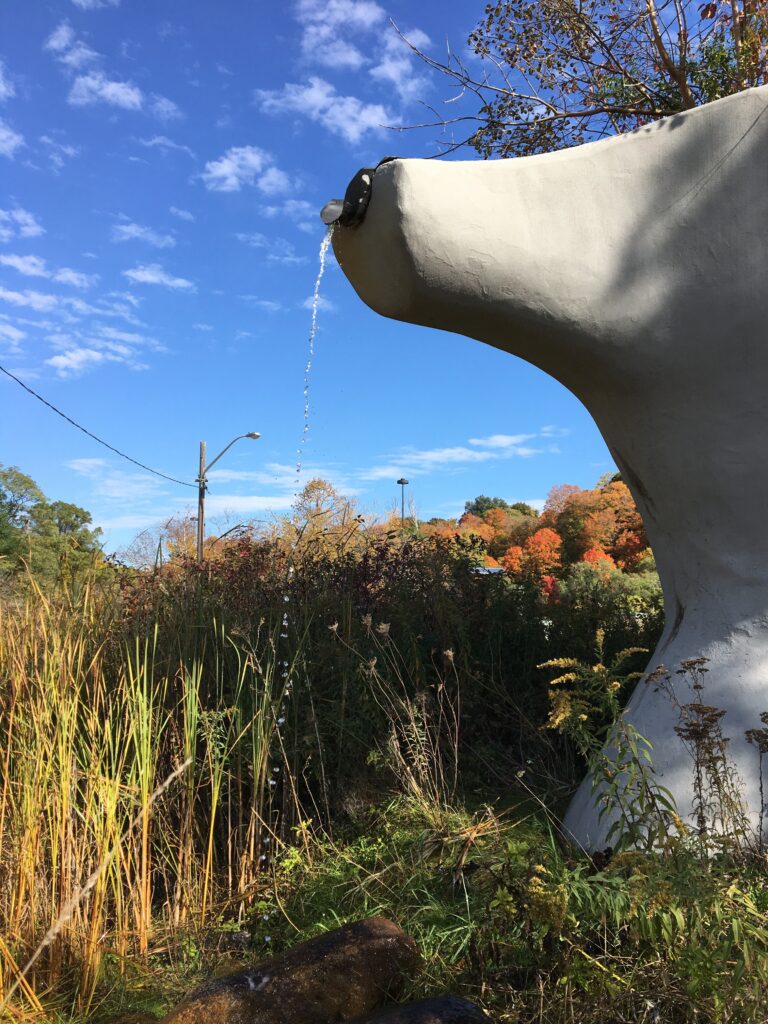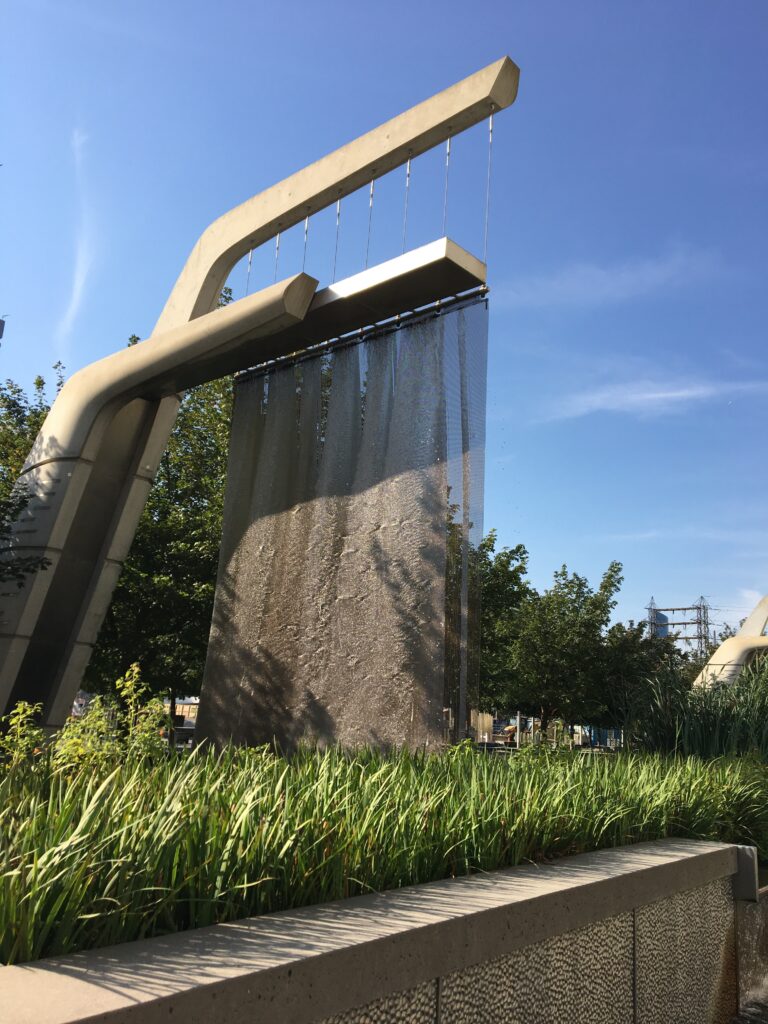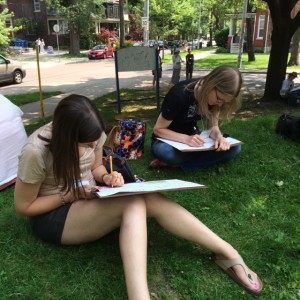Iāve been learning more about regenerative sustainability recently from my colleague John Robinson, who has been a vocal advocate for it at the University of Toronto in recent years (and at UBC for many years before that).Ā This is built on the premise that itās not enough to create communities that are ānet zeroā in terms of their greenhouse gas emissions, but in fact are ānet positiveā by actively contributing to a more sustainable world.Ā John introduced me to this through the Centre for Interactive Research on Sustainability at UBC, (a building he helped design; it sends rain water used to flush toilets in the building back into the sewer cleaner than it arrived).Ā So Iāve been looking for examples of āregenerative art-makingā, and realized that we have two excellent examples of this in permanent installations of this in Toronto.Ā Noel Hardingās ‘Elevated Wetlandsā (1999), recognized by many Torontonians for its prominent position along the DVP, was an early example of this. Using solar pumps, native plants and a recycled plastic substrate, Noel integrated science and art to model how an art installation can contribute to the cleansing of the Don River (known as one of Canadaās most polluted rivers.) Jill Anholt picked up on this two decades later in her design for Sherbourne Common, a small park on Torontoās waterfront.Ā With a similar purpose in mind, Anholtās design uses UV light, native plantings and a mesh screening system to cleanse storm-water run off before it goes into lake Ontario. Both artworks create inspiring, purposeful spaces that model regenerative sustainability in creative ways – we need more like these around the word!
Art as Regenerative Sustainability
Taking a Hopeful Approach
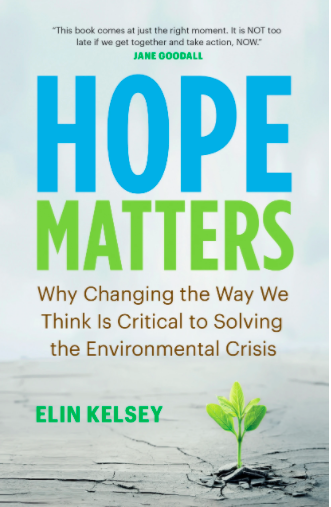
In recent years, environmental educators have been struggling with increasing levels of eco-anxiety in their students, and wondering how to counter this with environmental learning that is less focused on ādoom and gloomā. The work of Canadian scholar Elin Kelsey has influenced my thinking about this ā she argues that moving away from a legacy of fear and taking a hopeful approach to teaching and learning about the environment and sustainability is necessary, and more productive, in helping students cope with the threatening realities of the climate crisis. One of the strategies she recommends is giving them the tools to take action on environmental issues, to engage them in the process of positive change and develop their sense of agency. In my experience, the arts are a fantastic way to do this. Art-making is a form of visual story-telling, and as Kelsey writes, āThe stories we tell ourselves shape how we live and what we believe to be possible.ā Artists around the world have taken this to heart ā the explosion in the number of artists focused on environmentally-focused art-making has been extraordinary over the last decade. Each enacts David Orrās quote āhope is a verb with its sleeves rolled upā in unique and creative ways. As educators, we need to share the works of these artists with our students, and invite them to utilize all of the arts to shift the narrative, and our thinking, to imagining and enacting a world that is more just, equitable and sustainable.
Eco-learning to E-learning through Nature Journaling
Like so many things over the past few months, my blog writing has been sidelined since the arrival of the pandemic in Canada in March.Ā I’ve been working on how to take an active PD series focused on environmental and sustainability education and shift it quickly to e-learning. Weāve been using the Zoom platform to bring EcoSchools teachers together with some success, as we’ve had more teachers involved than ever before. But my next challenge – how to do this with environmental art-making? The limitations have been daunting – the weather outside was wet and chilly, teachers were only able to join online, with no guarantees of specific art materials or tools on hand. But spring always brings with it a sense of excitement and anticipation in a cold climate, so turning our attention to nature-journaling seemed like a viable way to re-connect with other living beings in a time when we were mostly staying inside. I had great models to follow ā check out the amazing work of Clare Walker Leslie, or that of John Muir Laws and Emily Lygren ā artists who have written inspiring books on nature journaling for teachers to follow. I discovered that nature journaling can be framed through the 4Rs ā reconnect with nature, record nature, research nature, and reflect on nature ā and can be easily integrated with math, literacy, geography, and science. Its flexibility can allow for teachers and students to use any art materials at hand, putting their creativity into play as they learn about ecology, biodiversity, and climate change.Ā Most importantly, the process of nature journaling can remind us that we are part of nature, not separate from it. If youād like to experience this webinar, you can find it in the TDSB’s archive.
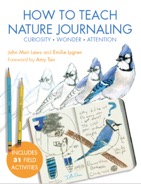
John Muir Laws & Emily Lygren 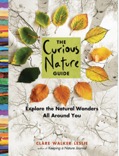
Clare Walker Leslie
Creating Garden-based Art in the Cold
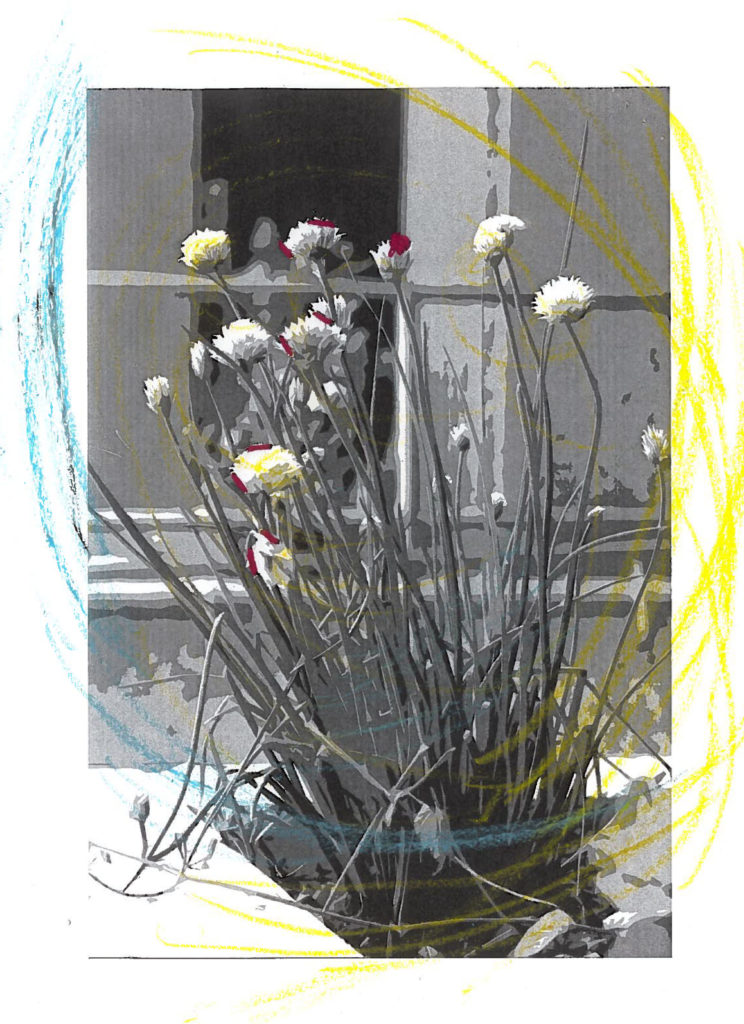
How to do garden-based art making in a cold climate when gardens are still dormant? This was my challenge last April, when the first spring plants were peaking out of the just-thawed soil, as we hosted a research symposium as part of the 2019 AERA conference (one of the worldās largest education research conferences.) Organized in conjunction with Susan Gerofsky (UBC) and Julia Ostertag, it included five presentations on educational gardens in higher ed institutions across Canada and the US. As the conference theme was on multimodal forms of learning, we decided to include an art-making component, but with no plants in the gardens yet, this proved to be a challenge. I decided to (literally) draw on our large archive of photographs of the plants in the garden instead, along with dried leaves and flowers saved from the previous fall. The forty delegates in attendance were invited to use enlarged black & white photos of the plants in the OISE garden as a starting point to creating their own art. Some added colour with pencil crayons, pastels and watercolours; others cut, folded and ripped the photos, and incorporated dried plant materials. With a variety of entry points, this proved to be a very flexible activity, open to a wide range of skill levels. Many of the delegates expressed their enjoyment of the activity, which enhanced their understanding of the papers presented. Perhaps a new approach to attending academic conferences has been found! See some of the artworks that resulted below.
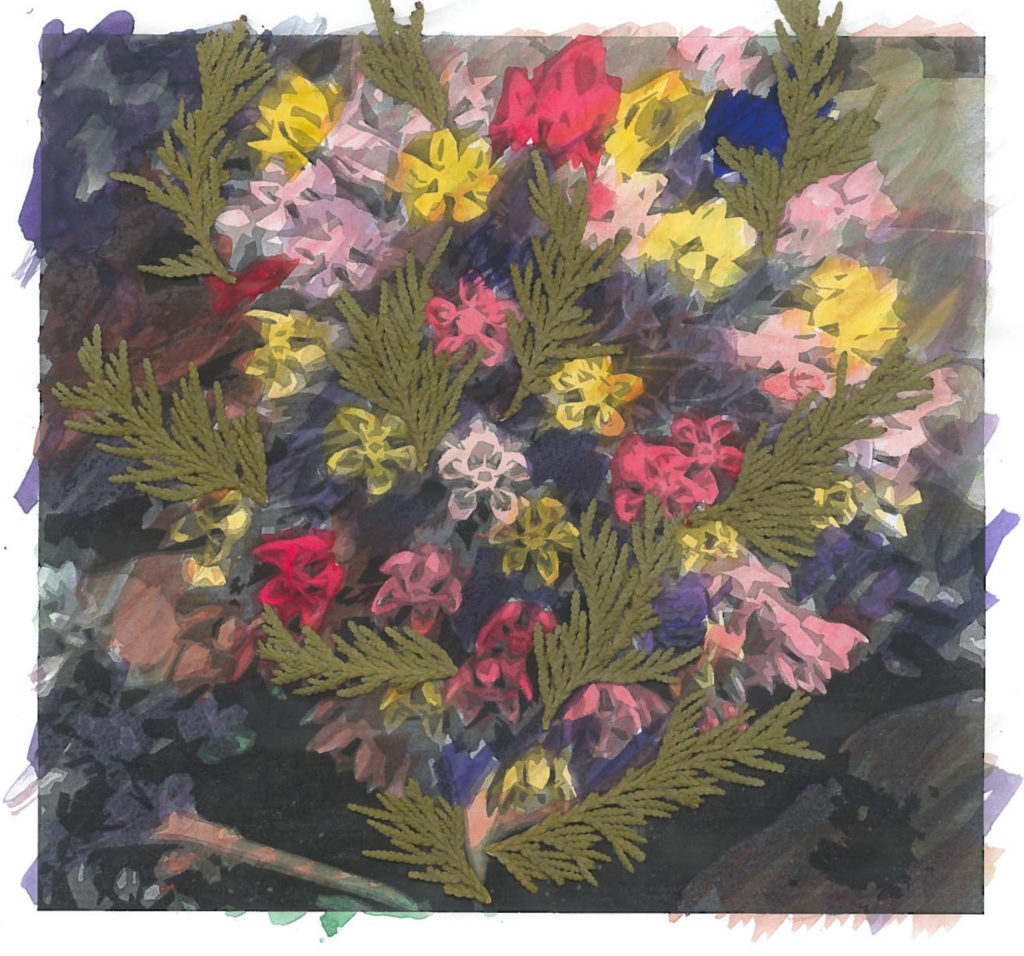
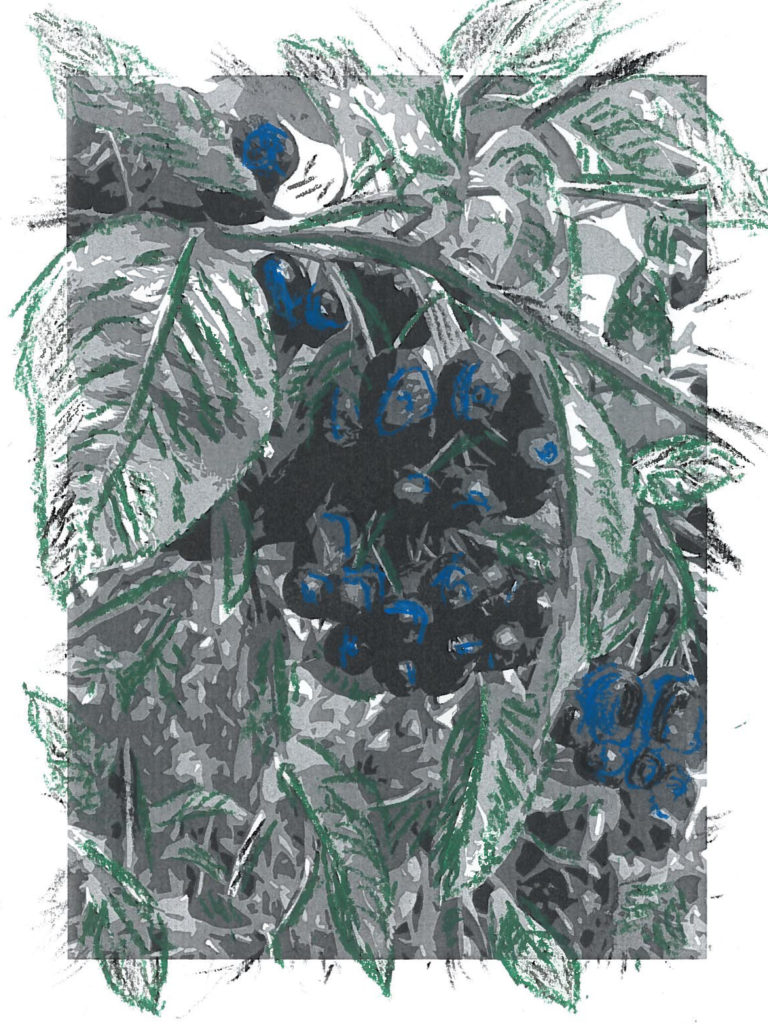
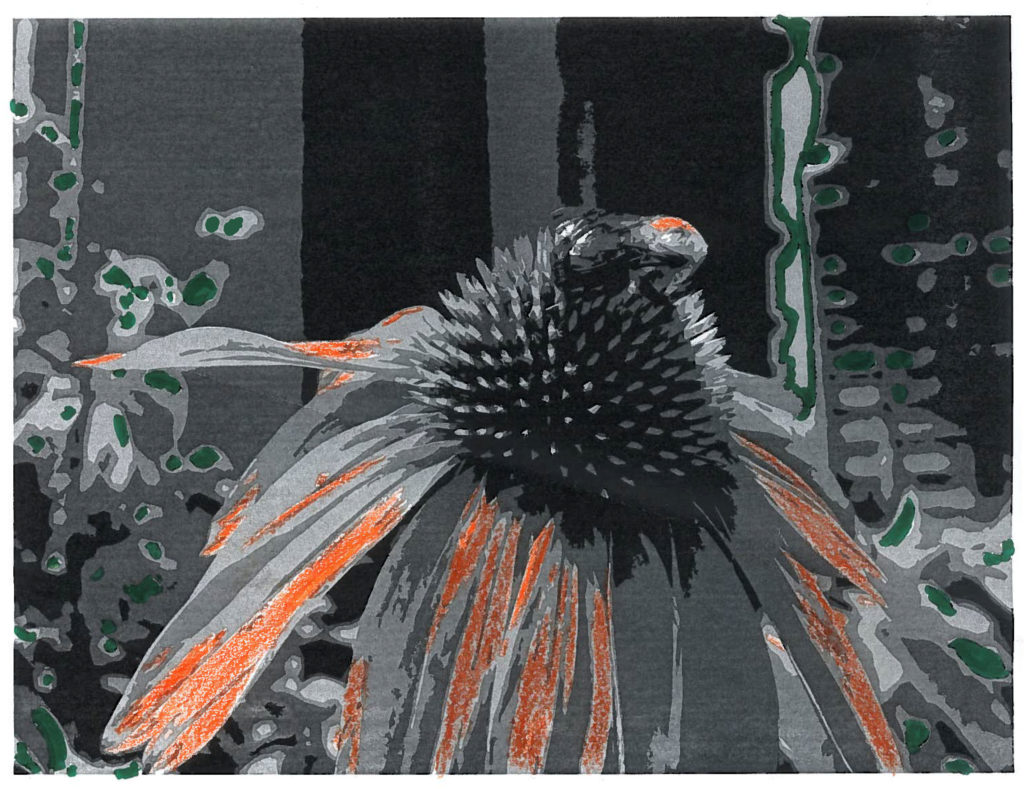
Nature-based Collages on the Nahanni
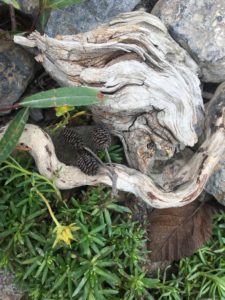 How do you make art in pristine natural environments without leaving any negative impact on the land? Ā This was my challenge as I rafted down the Nahanni River this summer. Ā Located in NWT in Canadaās north, this immense river flows through 5 spectacular canyons, moose meadows, sparkling creeks, a river delta, even a sulphur hot springs. Ā It lies on the traditional lands of the Dene people, andĀ inside the Nahanni National Park,Ā Ā so ensuring as small an ecological footprint as possible when visiting is critical. Ā I continued to explore a technique I began using in the Arctic last summer, that of making nature-based collages. Using the incredible beauty of the geology along the river as inspiration, I arranged rocks, wood and plants into compositions that captured the beauty of this area. Ā Once photographed, I returned the components to their original settings to reduce any potential interference with the local ecosystem. This was a type of creative shorthand that allowed me to capture the beauty I was experiencing in a low impact way. Ā Certainly it exemplifies the saying, āTake nothing but photos, leave nothing but footprints,ā and serves as an aesthetic record of my experience in this awe-inspiring part of the world.
How do you make art in pristine natural environments without leaving any negative impact on the land? Ā This was my challenge as I rafted down the Nahanni River this summer. Ā Located in NWT in Canadaās north, this immense river flows through 5 spectacular canyons, moose meadows, sparkling creeks, a river delta, even a sulphur hot springs. Ā It lies on the traditional lands of the Dene people, andĀ inside the Nahanni National Park,Ā Ā so ensuring as small an ecological footprint as possible when visiting is critical. Ā I continued to explore a technique I began using in the Arctic last summer, that of making nature-based collages. Using the incredible beauty of the geology along the river as inspiration, I arranged rocks, wood and plants into compositions that captured the beauty of this area. Ā Once photographed, I returned the components to their original settings to reduce any potential interference with the local ecosystem. This was a type of creative shorthand that allowed me to capture the beauty I was experiencing in a low impact way. Ā Certainly it exemplifies the saying, āTake nothing but photos, leave nothing but footprints,ā and serves as an aesthetic record of my experience in this awe-inspiring part of the world.
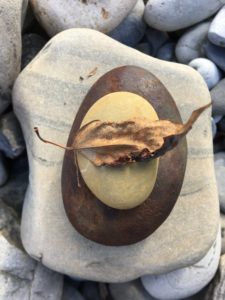
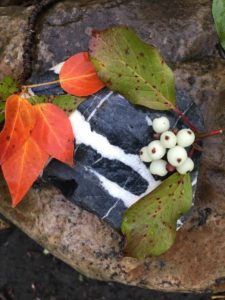
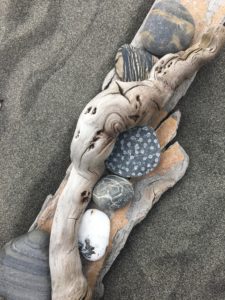
Planting Seeds for Eco-Art in China
 How is environmental art playing out in other parts of the world?Ā Ā I was lucky to travel to China this last spring, accompanying OISE interns as they taught in five schools in Hangzhou, a city a few hours southwest of Shanghai.Ā Ā I was impressed with the strong presence for the arts everywhere we travelled, evident in part in the gardens, architecture, public sculpture, and design of public spaces. As part of my visits to these schools, I was able to visit a few art classes, and pleased to see ālow impactā art-making being taught, inspired by traditional Chinese art forms, like paper-cutting, watercolour, and calligraphy. While I would not consider these forms of eco-art – there was no overt attention to environmental learning – they were supportive of similar tenets.Ā Ā The watercolours we saw students painting were focused on plants and wildlife; the calligraphy uses natural ink made from charcoal.Ā Ā A few of the OISE interns also put their learning about eco-art into play. They turned studentsā attention to learning about the plants and insect life in the schoolās butterfly garden.Ā Ā Drawing on their experiences working on the last few eco-art installations at OISE,
How is environmental art playing out in other parts of the world?Ā Ā I was lucky to travel to China this last spring, accompanying OISE interns as they taught in five schools in Hangzhou, a city a few hours southwest of Shanghai.Ā Ā I was impressed with the strong presence for the arts everywhere we travelled, evident in part in the gardens, architecture, public sculpture, and design of public spaces. As part of my visits to these schools, I was able to visit a few art classes, and pleased to see ālow impactā art-making being taught, inspired by traditional Chinese art forms, like paper-cutting, watercolour, and calligraphy. While I would not consider these forms of eco-art – there was no overt attention to environmental learning – they were supportive of similar tenets.Ā Ā The watercolours we saw students painting were focused on plants and wildlife; the calligraphy uses natural ink made from charcoal.Ā Ā A few of the OISE interns also put their learning about eco-art into play. They turned studentsā attention to learning about the plants and insect life in the schoolās butterfly garden.Ā Ā Drawing on their experiences working on the last few eco-art installations at OISE, 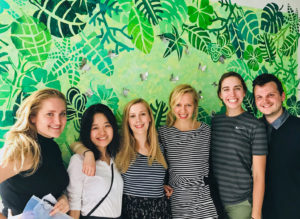 they created a beautiful homage to these by combing our butterfly installation from last year with our stencilled plant mural from this year.Ā Ā I canāt wait to see what these teacher candidates – and our Chinese hosts – accomplish movingĀ Ā forward!
they created a beautiful homage to these by combing our butterfly installation from last year with our stencilled plant mural from this year.Ā Ā I canāt wait to see what these teacher candidates – and our Chinese hosts – accomplish movingĀ Ā forward!
Getting some Arctic Exercise
August 18, 2017
I continue to be surprised by how busy each day is on the C3 journey; if weāre not helping out with housekeeping or meal service, weāre often rushing to the decks to view the wildlife on the land surrounding us via binoculars (to date: one polar bear, two muskox, thousands of birds, and today, bearded seals.) But while weāre busy, there hasnāt been much time for exercise, so we headed into Sophia Inlet today, a small leg of water off of Griffith Inlet, to get some hiking in.Ā We stopped in two places on this tranquil bay ā on a flat rocky beach at the far end of the inlet, and near a waterfall coming down a low mountain. Ā The beach area looked empty at first, but once we were walking, small treasures began to appear ā a whale vertebrae, a weathered wooden post, kittiwake feathers, bright green algae, smooth stones, and barnacles.Ā This provided a welcome opportunity to create some natural collages, a way to remember what I find without taking these items home.Ā Iām experimenting with a range of ways to make eco-art on this trip ā art that has small eco-footprints but maximum visual impact.Ā (Iām planning to pull them into a creative map when Iām back as a way of sharing this journey.) The second landing involved a hike up a beautiful waterfall, and then up the low mountain that it flowed down from ā what a spectacular view from the plateau at the top!Ā We were surprised how many seal bones we found on our way up ā we had found it a strenuous hike to the top, so we were left wondering which animals had the energy to carry seals up with them!Ā We returned to the ship feeling happy and tired, and ready for a rest in the Knot, our community lounge.Ā But no rest for the wicked, as they say ā we jumped onto the tail end of the kayaking and the paddle-boarding taking place off the ship.Ā The Polar Prince was moored in Griffith Bay, surrounded by dozens of chunks of sea ice.Ā Squeezing into a dry suit (no small feat in itself, I discovered), I hopped into a Greenland skin-on-frame kayak, having only kayaked twice before.Ā As the dry suits keep you warm in the frigid waters, I could allow my full attention to focus on the tranquility of skimming through the water and admiring the multiple shades of blue ice.Ā Ā The dry suit also afforded a float in the sea before getting back on the ship; it was so much fun to bob in the suit – way more fun than the polar dip the day before when I discovered how COLD the water really is! A fitting end to an active day, and a wonderful balance to our onboard programming on the ship in the evening.


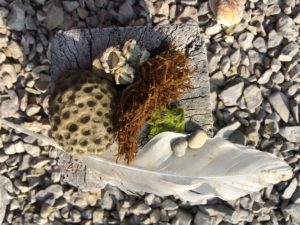
Bringing Creativity into Sustainability
I was lucky enough to spend some time learning firsthand from Mitchell Thomashow two summers back, a wonderful scholar, educator, and writer who has been influential on my own development in environmental & sustainability education (ESE).Ā Ā His EcoIdentity book was one of the first books on ESE that I read years ago, and now I’m working through his Bringing the Biosphere home (also an excellent read.)Ā Ā Mitch’s latest work focuses on the Ecological Imagination, recognizing the important role of expression, imagination, and creativity in working towards sustainability Ā Ā (http://www.mitchellthomashow.com/ecological-imagination/ )Ā Ā As part of the workshop he gave at OISE, he mentioned a book published by the Museum of Modern Art called BioDesign:Ā Nature+Science+Creativity (http://www.biology-design.com/ ).Ā Ā It’s a fascinating look at how we can partner with natural organisms and their ecological design capabilities toĀ create sustainable products, buildings, and communities.Ā Ā It takes the idea of environmental art-making to a whole new level.Ā Ā MOMA has posted a preview of the book on their website to give you a glimpse into a more sustainable future…I just need to find a way to do this, even if small-scale, with students. Ā Ideas anyone?
Collaborative Art-making in ‘Common Threads’
I attended a great talk on Eco-art recently by artist Sharon Kallis from Vancouver. She has authored a new book called ‘Common Threads’, which explores the use of collaborative art making as a way to raise awareness of the natural world and the environmental issues it faces. Invasive plant species are of particular concern, as she experiments with ways to re-purpose these plants as art material to deal with sustainability challenges. Sharon has created clothing out of plants, for example, weaving leaves and stems into functional material. I really enjoyed learning more about the community gardens she has been involved in in Vancouver, always with an eye on how the garden might be used as exhibition site or as a source for biodegradable art materials.Ā Ā Recently she has been growing flax to make into linen fibre, (demonstrating that she has far more patience than I do!) I really appreciate her use of art-making techniques with a rich history, and ones that have often been positioned as ‘women’s work’, helping to reclaim these into the lexicon of contemporary art practice. At the core of this work is always a focus on using art to build community, an important part of living more sustainably on the earth. More info about Sharon’s work can be found here:Ā http://sharonkallis.com/ 
Mapping Sensory Experiences of Place
I taught a professional development course for teachers from the Toronto District School Board in July – always a pleasure to work with teachers who are so passionate about environmental learning that they give up three weeks of their summer vacation to learn more about it! I was pleasantly surprised to see such an interest in environmental art-making ā there were lots of great ideas shared around the table, evidence of the experimentation going on in Toronto schools about how to use the arts to support eco-literacy. Many expressed their enjoyment of the āsensory mappingā activity we did on our first day together ā such a simple way to get learners to connect with and reflect on the power of place-based education. The teachers were asked to capture their sensory experience of the local park into the form of a pastel drawing. This requires them to consider how a sound translates into a line, a touch into a colour, or a smell into a shape. This proved to be a great way to get them to focus on the place, and to remove the inhibition that some have about drawing as all of the drawings turn out abstractly. Later in the course we talked about the power of ācreative mappingā, drawing on the books The Map as Art (by Katherine Harmon) and Mapmaking with Children (by David Sobel.) Mapping and sensory experience can go hand in hand to help learners of all ages experience the environments in which we live in creative ways.
